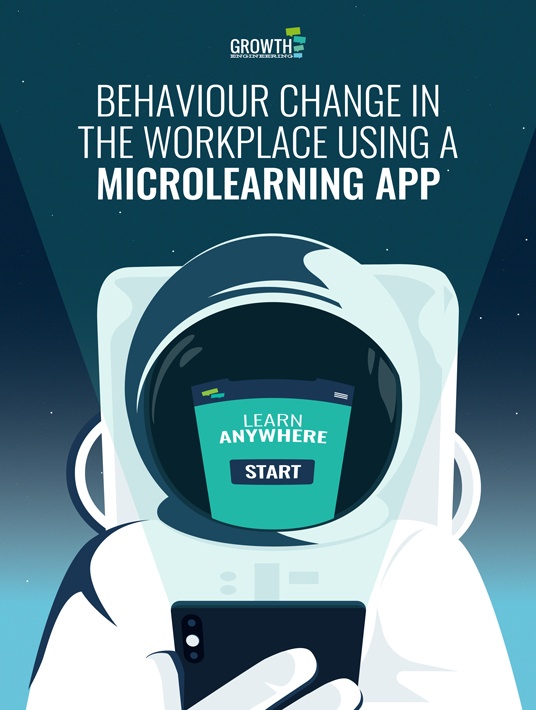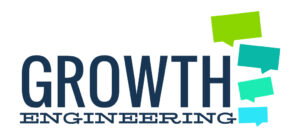How To Make Sure That You Facilitate Long-lasting Behaviour Change
James Prochaska and Carlo DiClemente came up with what is now the best-known model of behaviour change. It’s often called the "Stages of Change" and is a model with 6 separate stages. What this model highlights is that change is gradual, takes time, and that relapse is an expected part of the process. In L&D this means we can’t expect learners to change overnight!

1. Pre-Contemplation
This is the very first stage before anyone is even aware that there is a problem that needs fixing! Pre-contemplation literally means that you haven’t begun to think about something yet, so you could call this stage "ignorance is bliss."
2. Contemplation
The contemplation stage describes the period in which people realise change is needed. It often involves the weighing up of pros and cons. On the one hand, you know that changing behaviour will have advantages, but on the other... behavior change requires time and energy. This is why it’s essential for L&D professionals to communicate why a change in behaviour is needed before the campaign for behaviour change even starts. It’s important to understand that it isn’t just senior management who cares about business impact. Learners need to understand the practical value of training before they’ll even contemplate it. This means there needs to be a purpose to your training. Clearly relate the impact of your training to your business mission and your learners will understand why it matters.
3. Preparation
"Failing to prepare is preparing to fail," as the saying goes. The preparation stage of behaviour change is your chance to research and assemble your content. You can also fire up an in-house promotional campaign to create a buzz. If you haven’t got a large pool of cash set aside to promote your training you could apply some guerilla advertising techniques. You could go for a poster campaign, share videos using your learning platform, set up some promotional banners and even get some teaser trailers going. Get people talking about your campaign and you can be confident you’ll release it to a tidal wave of completions. Whilst you market your training, you need to make sure you have everything prepared. You’ll need to create the training alongside the follow-up content you’ll use to reinforce it.
4. Action
The fourth stage is the time for you to take action; this means launching your brand-spanking new learning campaign! Release your training just as excitement and curiosity reach its peak. Then follow up your training with micro-units and battles to reinforce it. The spacing effect helps establish the neurons in your learners' brains. This will help your learners transform knowledge into behaviour.
5. Maintenance
This is where the real test comes in. The mark that real behaviour change has taken place is when you can comfortably maintain the pattern shift. The more consistent learners are with their new behaviours, the easier the transition will be. The key here is to make sure your learners aren’t tempted to go back to what’s comfortable, known and easy. A powerful way to ensure maximum uptake for your new training is to create a community focused on the new behaviours. By using the right mobile app you can create a social learning community for your learners to share their progress, tips and to ask Subject Matter Experts for help. The community vibe will make sure your learners know that this is something the whole organisation is working toward.
6. Relapse
Most conscious efforts of behaviour change will see the subject experience a relapse into old behaviours. This is perfectly normal, especially early on in the process. This is why it’s so important for behaviour change to be an organisational thing. Your learners can help each other stay on track! So, we now know the stages needed for successful behaviour change. But, how do you measure a learner's journey from knowledge to changed behaviour? This model is a cycle that looks like this:
Knowledge To Behaviour
Bloom’s Taxonomy is a set of 6 levels that describe the stages of competence during a learning journey. The lower stages represent basic knowledge and the higher stages demonstrate complex analytical skills.
1. Knowledge
At the very bottom of the pyramid, your learner will understand the relevant information. This means your learners can recall the information, but don’t understand it well enough to work with it.
Knowledge And Behaviour Change
Knowledge is absolutely essential to behaviour change. Without knowledge, behaviour change simply will not happen! But, at the same time, knowledge isn’t enough to change behaviour on its own. The rise in technology means there are a variety of different ways to share information that leads to knowledge. You can do so via video, audio, PDF and many other mediums.
2. Comprehension
Comprehension goes beyond "knowing" something to fully understanding it. This is where quizzes can help you understand if your learners have comprehended what they’ve learned.
Comprehension And Behaviour Change
An important part of your behaviour change campaign is ensuring that your learners don’t just understand what is required, but why it’s required.
3. Application
The application stage is where your learners start to apply the training you’ve given them.
Application And Behaviour Change
When it comes to behaviour change, this is the crucial stage. When learners start to apply your training, that’s when their behaviour starts to change. You can make sure that training transforms into everyday behaviour by setting your learners' practical challenges. Practical challenges can help learners make the jump from comprehension to application.
4. Analysis
Being able to analyse a concept can take you from a rookie to a master. It’s what takes you beyond simply doing something, to being able to grow and improve.
Analysis And Behaviour Change
By level three your training has already resulted in behaviour change. So, why bother with stages four, five and six? The difference between application and analysis is knowing how to do something, and being able to do it well. Tools like scenario-based quizzes can help your learners understand how they can improve and do things better. It will also help them apply their knowledge to novel situations
5. Evaluation
You can think of evaluation as a more assured version of analysis. Analysis is when you’re able to grow and improve yourself; but by the evaluation stage, learners are so confident and have so much expertise they can help others to grow!
Evaluation And Behaviour Change
Once learners have reached the evaluation stage you can use them as an asset to help other learners reach their behaviour change objectives! Use social features, like newsfeeds and subject-specific forums, to put this in-depth knowledge to use and to drive a knowledge-sharing community.
This will help cement your training into your organisational culture!
6. Creation
Creation is the pinnacle of Bloom’s Taxonomy. By this point, a learner has understood a topic so thoroughly that they’re able to innovate and work creatively with it. Those who reach the creation stage are full-on Subject Matter Experts and are of enormous value to your organisation!
Creation And Behaviour Change
Learners who climb all the way to the top of Bloom’s Taxonomy are enormously valuable. You can use these Subject Matter Experts to help you improve your training and find even better ways to get things done. They’re an invaluable resource for ensuring behaviour change is long-lasting. Subject Matter Experts will naturally act as champions for your training and will be able to provide support to their colleagues. The 6-stage model of behaviour change helps you understand how to drive behaviour change within your organisation. It gives you a birds-eye view of the process. Bloom’s Taxonomy helps you to fill in the gaps. With these two models, you have a framework for understanding what behaviour change looks like. But as you start to drive behaviour change, what will be the impact on your organisation?
Final Word
These two models will help you understand how behaviour change works. The 6 stages of behaviour change give you a birds-eye view of the process from start to finish. You can use it to shape your campaigns for behaviour change. Bloom's Taxonomy is just as important. Knowing something is never enough. Bloom's Taxonomy demonstrates the journey each learner takes, going from simply understanding a topic to being able to work with it and use it to create new ideas. These two models give you a map to changed behaviour. If you want more insight into behaviour change and helpful strategies to help drive it, why not download our eBook: Behaviour Change in the Workplace Using a Mobile Learning App?
If you still haven't had enough and you want your training to really impact your business, take part in the webinar: "How To Improve Performance & Unleash Potential: A Guide To Behaviour Change Via Microlearning Apps". Growth Engineering will break down how you can improve the performance of your staff. You’ll also learn all about their proven model for changing behaviour and unleashing the potential of your learners using a microlearning app.


